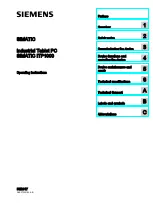
69
DEW POINT
- The dew point is the temperature below which the water vapor in air at constant barometric pressure
condenses into liquid water at the same rate at which it evaporates. The condensed water is called
dew
when it forms on a solid surface.
- The dew point temperature is determined by the temperature & humidity data from wireless 7-IN-1 sensor.
4.4.7
RAIN DISPLAY
Rainfall is usually shown as Daily Total and Rain Rate (estimated amount of rainfall per hour).
4.4.7.1 DEFINITION
Rain Rate is defined as the rainfall measured in the last 10 minutes, and multiplied by six. This is also
referred as instantaneous rainfall per hour.
Daily Rainfall
is defined as rainfall since midnight (start of a new day)
Weekly Rainfall
is defined as rainfall between Sunday and Saturday.
Monthly Rainfall
is defined as the calendar month total from first to last day of the month
Total Rain
is defined as the rainfall measured since the station was powered up or reset.
4.4.7.2 RESET RAINFALL
Erroneous readings may occur during the installation of the 7-in-1 Multisensor. Once the installation is
completed and functioning correctly, it’s advisable to clear all the data and start afresh. Please refer to 4.4.8
ERASE ALL DATA.
4.4.8
BAROMETRIC PRESSURE
The atmospheric pressure is the pressure at any location of the earth caused by the weight of the column
of air above it. One atmospheric pressure refers to the average pressure and atmospheric pressure
gradually decreases as altitude increases. Meteorologists use barometers to measure atmospheric
pressure. Because absolute atmospheric pressure decreases with altitude, meteorologists correct the
pressure relative to sea-level conditions. Hence your ABS pressure may read 1000 hPa at altitude of 300m,
but the REL pressure is 1013 hPa (in clear weather condition)
To obtain accurate REL pressure for your area, consult your local official observatory or check weather
website on Internet for real time barometer conditions, and then adjust the relative pressure in
CALIBRATION SETTING (Section 4.9.7)
4.4.9
WIND SPEED AND WIND DIRECTION
The wind section displays wind speed (gust or average), current wind direction, predominant wind
directions (over the last 5 minutes), and wind speed level in compass background color.
Wind speed is defined as the average wind speed measured in the 12 second updated period.
Average Wind (in detail screen 4.3.2) is the average of 10 minutes wind speed record.
Wind gust is defined as the peak wind speed measured in the 12 second update period.
The Beaufort Scale is an international scale of wind velocities ranging from 0 (calm) to 12 (Hurricane force).
The Beaufort Scale is defined as follows:
Beaufort Scale
Description
Wind Speed
Land Condition
0
Calm
< 1 km/h
Calm. Smoke rises vertically.
< 1 mph
< 1 knots
< 0.3 m/s
1
Light air
1.1 ~ 5km/h
Smoke drift indicates wind direction.
Leaves and wind vanes are stationary.
1 ~ 3 mph
1 ~ 3 knots
0.3 ~ 1.5 m/s
2
Light breeze
6 ~ 11 km/h
Wind felt on exposed skin. Leaves rustle.
Wind vanes begin to move.
4 ~ 7 mph
4 ~ 6 knots
1.6 ~ 3.3 m/s
EN
Summary of Contents for 7003500
Page 98: ......
















































